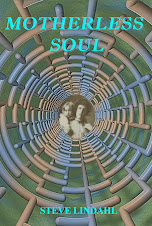 Memoirs of a Geisha by Arthur Golden
Memoirs of a Geisha by Arthur GoldenMy rating: 5 of 5 stars
Memoirs of a Geisha is the story of Chiyo Sakamoto, a young girl in Japan who is both blessed and cursed with beautiful blue-gray eyes. When her mother dies, her father, who is very old, sells her and her older sister, Satsu, to an okiya (a house where geisha live). Satsu isn't as pretty as Chiyo, so she is resold to a house of prostitution, while Chiyo stays on in the okiya. Chiyo's natural beauty makes her the focus for the jealousy of Hatsumomo, the one successful geisha living in the okiya. As the plot moves along Chiyo, who is renamed Sayuri, deals with jealousy and betrayal, but also finds friendship and kindness. The research that went into writing this novel has produced a fascinating and educational portrayal of the lives of geisha during the mid twentieth century, but Arthur Golden has also produced a work with strong characters who captivate his readers.
At one point in the book, prostitutes and geisha are called something to the effect of “distant cousins.” I suppose that description is accurate, because they both make money by entertaining men. But the geisha portrayed in Memoirs of a Geisha are careful about their reputations and instead of offering sexual favors to a number of men, look for wealthy patrons to become their “dannas.” In this way they are more like mistresses than prostitutes. Yet they seem to be so much more. They study their art in special schools where they learn dance, singing, storytelling and how to play a musical instrument called the shamisen. They are artists and celebrities.
One of the aspects of this novel I found fascinating was the fact that it was set in Japan before and after World War II. The impact of the war on the life of the geisha was primarily economic. There was very little discussion about the war other than how it affected other geisha. And after the war was over the geisha began to entertain the Americans. They seemed amazingly apolitical.
Memoirs of a Geisha does what good novels do best, it takes its readers to a different place and time and lets us into the lives of the people living there. I would recommend it to most anyone who enjoys good fiction and if you read it years ago, it would be worth picking up again.
View all my reviews








